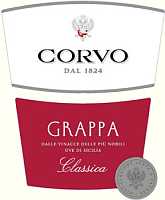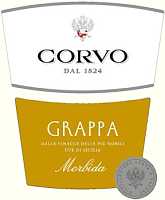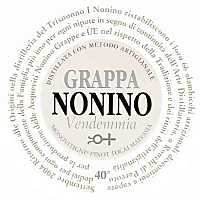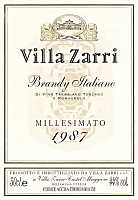
Wine Culture and Information since 2002 - Volume 22
 Wine Culture and Information since 2002 - Volume 22 |
|
OnionAmong the most common vegetables, onion is a fundamental ingredient in many cooking in the world, capable of giving taste and finesse to every dish |
|
Onion probably is the most common vegetable in the world, appreciated by men for more than four thousand years. Belonging to the family of Alliaceae, onion - whose scientific name is Allium Cepa - certainly is one of the most used vegetables in cooking. It is believed onion is from Asia, however in case of plants known since immemorial times, it is pretty difficult to find a reliable origin, also for the fact the original plant from which it derives could be extincted, or it could have changed so deeply and became different. By observing the varieties of onion existing today, it can be mainly noticed differences in the shape: single bulb, grouped bulbs, large bulbs, small bulbs and with green sprouts. These differences certainly are of interest for botanists, but also for cooks who need to choose the most suitable type according to every gastronomical recipe. Basically speaking, all the cultivated onions belong to few well distinct species.
Among the many varieties of onions, four of them are particularly common. Allium Cepa - or European onion - with hundreds of different types in shape, color and aroma. To know whether it is an European onion, it is enough to carefully watch the section of a leaf: in case it has a concave surface, it is hollow and flat, then it belongs to the cepa variety. Allium Fistulosum, very common and used in the East, it is the species to which belongs Japanese onion. Fistulosum onions can be recognized by cutting the section of a leaf: the inside is hollow and round. Allium Tuberosum, commonly known as Chinese chive, is very common in China, Japan and in some areas in Northern India. It spontaneously grows in China and in some areas of Himalaya, it looks bigger than chive and has non concave leaves. This variety does not blossom in tempered climates, however in the areas where this variety of onion blossoms, its flowers are used for making salads. Allium Schoenoprasum is the only variety spontaneously growing both in America and in Europe. Thanks to its high capacity of adaptation to different climates, such as alpine climates, this variety shows remarkable variations. Its cultivation seems to date back to the Middle Age, and it is very used by the cheese industry to aromatize cheese and in cooking to aromatize soups, omelettes and other dishes.
|
||||||||
|
It seems the onion is from Asia, more likely from Persia. It was known and appreciated by Egyptians around 3,000 BC, and they depicted it in their tombs and used as a part of the salary for soldiers. In Europe it was introduced by ancient Greeks and Romans knew and appreciated its many qualities. Pliny the Elder - Roman scientist, naturalist and historian - described it as a powerful diuretic in case it is consumed raw and laxative when cooked. With time the few species have generated hundreds of varieties, all being different one from another in color, taste, aroma, size and keeping qualities. For a correct use in cooking it is indispensable to recognize it in order to properly cook it, as the aroma and the taste of onion change according to variety, type and duration of cooking. For example, a cut onion left to the air, develops, after some time, an aroma which can be found in kebab, a stale taste, typical of the meat allowed to hang for one night with onions. Expert cooks, in order to keep a cut onion, scald it with some butter: in this way it is possible to keep it in the fridge for one day. Spring onions and shallots are the most suitable varieties to be consumed raw - also mixed with salad - in this sense, the best varieties are the ones belonging to Allium Cepa and the other varieties with small leaves, erroneously called winter onion or Japanese onion. Winter onion, or Japanese onion, is the most used in the East, in particular in China and in Japan, probably coming from Siberia, it can adapt to many types of soil and climate. Japanese onion is more aromatic and digestible than common onion, however it cannot be dried and it must be consumed fresh. White onion is typical in summertime, the color of the bulb is white, sweet and with a delicate taste, it is suited for dishes where it is not necessary any browning, it is used both raw and cooked. In order to make it more digestible, it is enough to keep it for some hours in water and vinegar and replacing the liquid for three times. The variety known as Egyptian onion, is a plant developing three bulbs and a hollow stalk. The taste of bulbs is very pungent, a quality particularly appreciated by many. Yellow onions are typical in autumn and winter times, and also its taste seems to adapt to the season, in fact its characteristic is to have a strong and pronounced taste. Widely used in French cooking, it is an excellent side dish for pork meat. Red onion is a variety typical in wintertime, characterized by a bulb with a red-purple color, whereas the inside shows a white color with red veins. The taste is intense, strong, pronounced, slightly pungent. It is suited for the preparation of warm dishes and in particular boiled meat and soups, it is excellent fried. Scallion is a white onions with a non fully developed bulb and with a long stalk, having a delicate taste. It can also be consumed raw. Lastly, there is another variety, mainly cultivated in Ireland, called onion potato. Today the onion is available in supermarkets also in dried and powdered form, however, despite its use can be considered handy, its taste and aroma cannot compete, in any case, with fresh onion. The typical aroma of onion is caused by sulphurated substances, also responsible for the tear effect. These substances are water soluble and volatile at room temperature, therefore in order to lower the tear effect, onion can be kept in the fridge and washed before cutting. At the moment of purchase, it is always recommended to pay attention on its solidity: the onion must always be well solid and with no green sprouts. Onion is rich in vitamins - in particular vitamin C - and mineral salts. The characteristic taste is caused by the presence of a volatile oil known as allyl sulfur, a substance also responsible for the diuretic effect. Onion has an antiseptic effect on the gastro-intestinal apparatus and respiratory apparatus, lowers the level of glycaemia and can be useful for hypertension. Moreover, it is diuretic, it lowers the level of cholesterol and glucose in blood. It should be remembered many of the beneficial properties of onion are lost during cooking, therefore, for the ones who can tolerate this, it is best to consume it fresh and raw. Its use is not recommended to anyone having problems of hyperacidity or digestion, as it contributes to increase the level of acidity in the stomach, it is also not recommended to anyone suffering from eczema and dermatitis. Onions contain natural antibiotics and, according to some, rubbing the hair with onion juice is useful to prevent baldness. In medicine, the onion is used for the preparation of cicatrizant creams.
|
||||
AquavitaeReview of Grappa, Distillates and Brandy |
|
|
| Distillates are rated according to DiWineTaste's evaluation method. Please see score legend in the "Wines of the Month" section. |

|
|
Grappa Classica Corvo |
|
| Duca di Salaparuta (Sicily, Italy) | |
| (Distiller: Distilleria Trapas) | |
| Raw matter: Pomace of Nero d'Avola, Nerello Mascalese, Pignatello | |
| Price: € 8.80 - 50cl | Score: |
| Grappa Classica Corvo is colorless, limpid and crystalline. The nose denotes intense, clean and pleasing aromas of plum, black cherry, violet, hazelnut and licorice with perceptible alcohol pungency. In the mouth has intense flavors, with perceptible alcohol pungency which tends to dissolve rapidly, good correspondence to the nose, balanced sweetness, pleasing roundness. The finish is persistent with flavors of plum and hazelnut. Alcohol 30%. | |

|
|
Grappa Morbida Corvo |
|
| Duca di Salaparuta (Sicily, Italy) | |
| (Distiller: Distilleria Trapas) | |
| Raw matter: Pomace of Inzolia, Grecanico | |
| Price: € 8.80 - 50cl | Score: |
| This grappa shows a pale straw yellow color, limpid and crystalline. The nose denotes intense, clean, pleasing and refined aromas of licorice, chocolate, vanilla, honey, pear and plum with almost imperceptible alcohol pungency. In the mouth has intense flavors, perceptible alcohol pungency which tends to dissolve rapidly, good correspondence to the nose, pleasing roundness. The finish is persistent with flavors of plum and honey. Alcohol 38%. | |

|
|
Grappa Nonino Vendemmia 2006 |
|
| Nonino (Friuli Venezia Giulia, Italy) | |
| Raw matter: Pomace of Pinot, Tocai and Malvasia | |
| Price: € 14.90 - 70cl | Score: |
| This grappa is colorless, limpid and crystalline. The nose reveals intense, clean, pleasing and refined aromas of raspberry, plum, praline, hazelnut, pear, wistaria and apple with almost imperceptible alcohol pungency. In the mouth has intense flavors, with perceptible alcohol pungency which tends to dissolve rapidly, very good correspondence to the nose, balanced sweetness, pleasing roundness. The finish is very persistent with long flavors of pear, plum and raspberry. Grappa Nonino Vendemmia is produced with the discontinuous method in steam operated alembic stills. Alcohol 40%. | |

|
|
Brandy Italiano Millesimato 1987 18 Anni |
|
| Villa Zarri (Emilia Romagna, Italy) | |
| Raw matter: Trebbiano Toscano and Trebbiano Romagnolo wines | |
| Price: € 50.00 - 50cl | Score: |
| This brandy shows a dark amber yellow color, limpid and crystalline. The nose reveals intense, clean, pleasing, refined and elegant aromas of chocolate, tobacco, vanilla, honey, hazelnut, prune, licorice, dried fig, praline, ripe banana and cigar box. In the mouth has intense flavors with perceptible alcohol pungency which tends to dissolve rapidly, very balanced, pleasing roundness, velvety. The finish is very persistent with long flavors of chocolate, honey, hazelnut, prune and licorice. A great brandy distilled in discontinuous “Charentais” alembic still and aged in cask until the moment of bottling. Alcohol 44%. | |
Wine Parade |
|
|
| The best 15 wines according to DiWineTaste's readers. To express your best three wines send us an E-mail or fill in the form available at our WEB site. |
| Rank | Wine, Producer | |
|---|---|---|
| 1 |
| Sagrantino di Montefalco Collepiano 2003, Arnaldo Caprai (Italy) |
| 2 |
| Amarone della Valpolicella Classico Costasera 2001, Masi (Italy) |
| 3 |
| Soave Classico Monte Alto 2004, Ca' Rugate (Italy) |
| 4 |
| Don Antonio 2003, Morgante (Italy) |
| 5 |
| Sforzato di Valtellina Canua 2001, Conti Sertoli Salis (Italy) |
| 6 |
| Nero al Tondo 2001, Ruffino (Italy) |
| 7 |
| Barolo Cannubi Boschis 2001, Sandrone (Italy) |
| 8 |
| Chianti Classico Riserva Novecento 2000, Dievole (Italy) |
| 9 |
| Amarone della Valpolicella Classico 2000, Zenato (Italy) |
| 10 |
| Barolo Bussia 2001, Prunotto (Italy) |
| 11 |
| Mater Matuta 2003, Casale del Giglio (Italy) |
| 12 |
| Wine Obsession 2001, Vignamaggio (Italy) |
| 13 |
| Collio Bianco Col Disôre 2004, Russiz Superiore (Italy) |
| 14 |
| San Leonardo 2001, Tenuta San Leonardo (Italy) |
| 15 |
| Brunello di Montalcino 1999, Castello Banfi (Italy) |
|
||||||||
|
DiWineTaste Polls
|
| |||||||
Privacy Policy | |||||||


| Copyright © 2002-2024 Antonello Biancalana, DiWineTaste - All rights reserved |
| All rights reserved under international copyright conventions. No part of this publication and of this WEB site may be
reproduced or utilized in any form or by any means, electronic or mechanical, without permission in writing from DiWineTaste. |